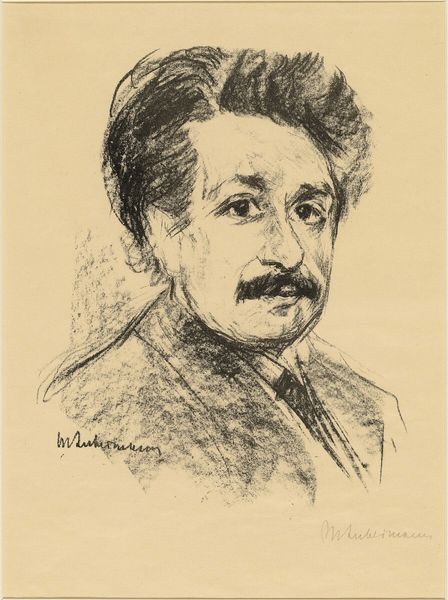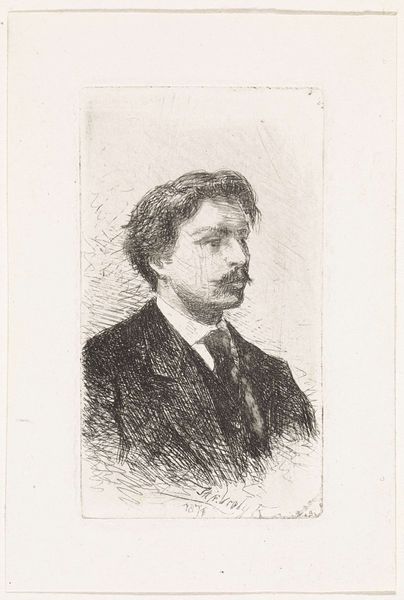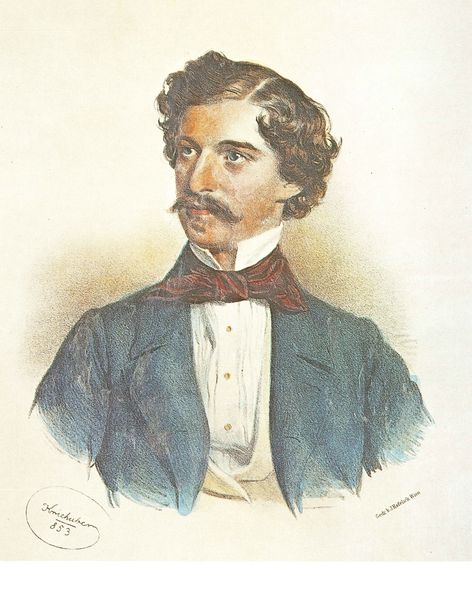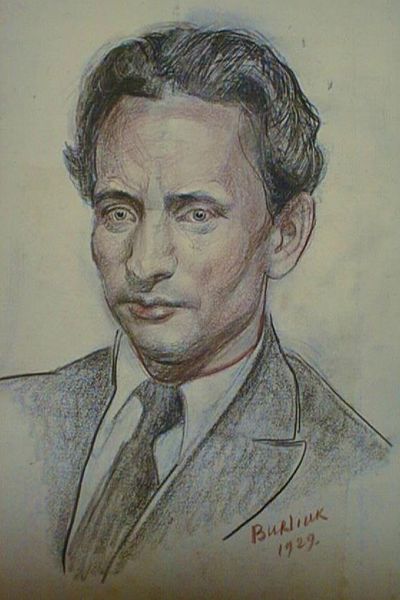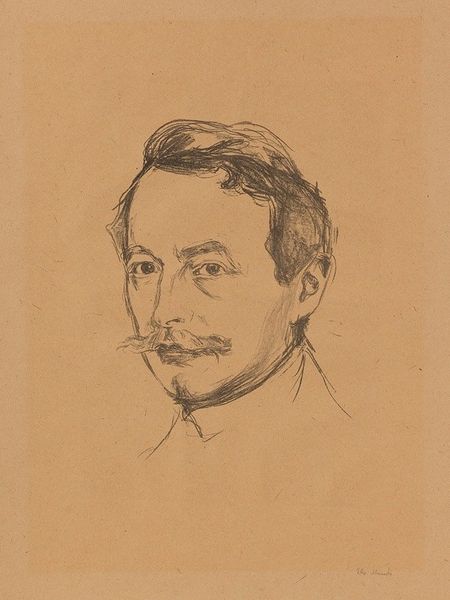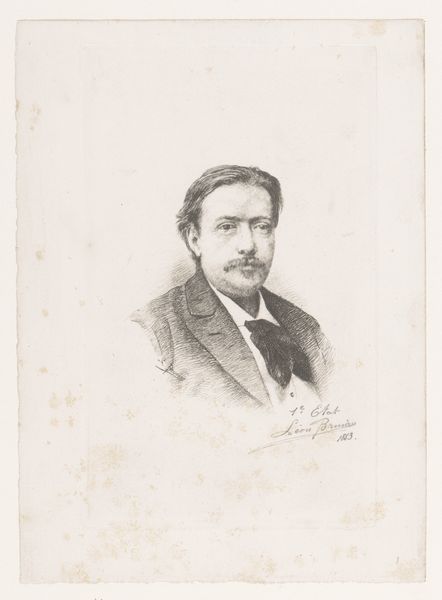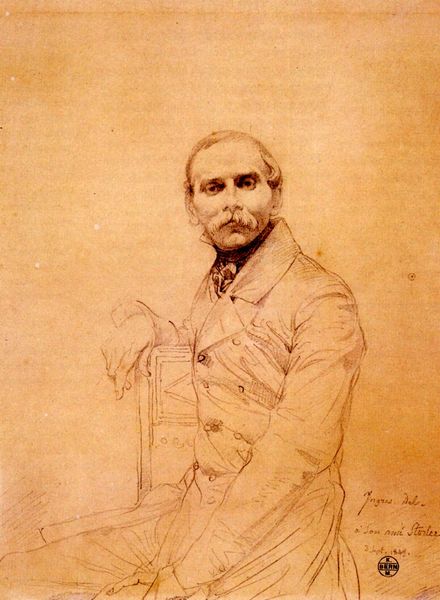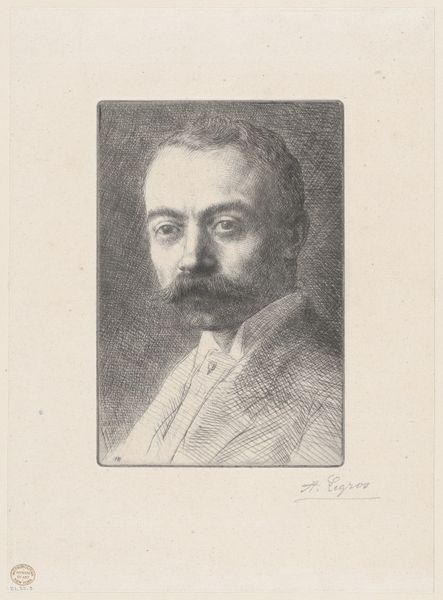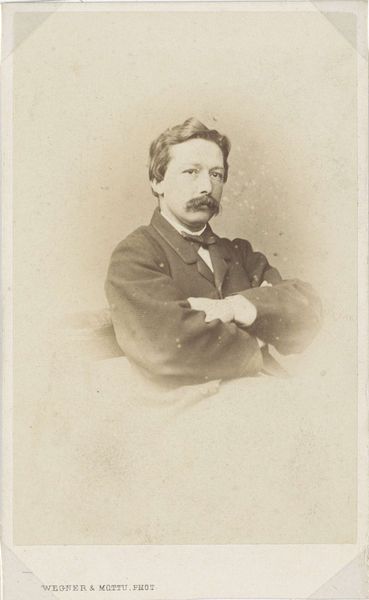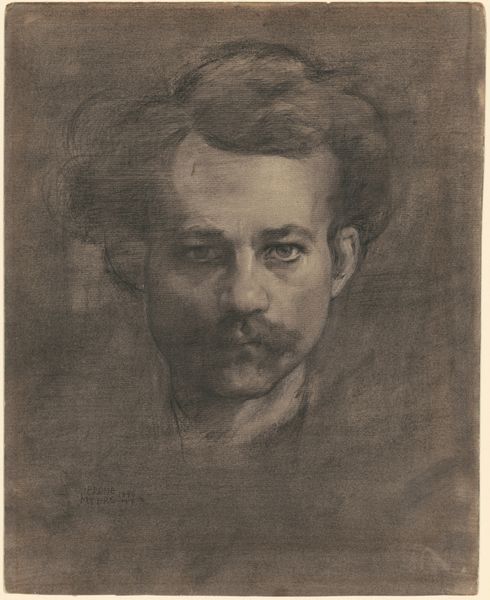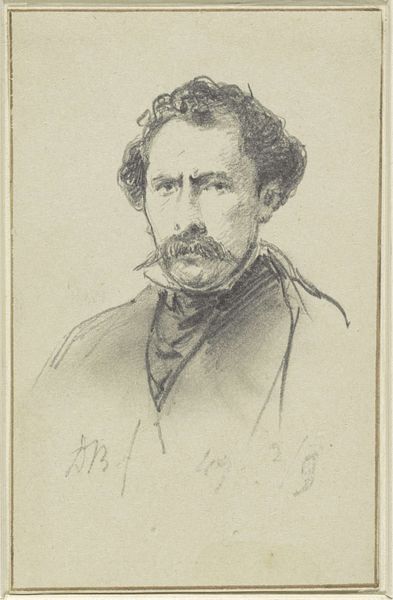
drawing, charcoal
#
portrait
#
drawing
#
facial expression drawing
#
self-portrait
#
head
#
charcoal drawing
#
charcoal art
#
portrait reference
#
sketch
#
animal drawing portrait
#
portrait drawing
#
facial study
#
charcoal
#
facial portrait
#
academic-art
#
forehead
#
portrait art
#
realism
#
digital portrait
Copyright: Public domain
Editor: This is "Portrait of a Man" by Joan Brull. It's a charcoal drawing and it has a really compelling, almost brooding feel. What stands out to you? Curator: Well, immediately, the gaze draws me in. It's a gaze that carries the weight of history, wouldn’t you agree? Consider how portraiture throughout time has been used to project power, status, and identity. Editor: Yes, the gaze is really direct. How does that connect with your understanding of cultural memory? Curator: The eyes, quite literally, are the windows to the soul. What kind of "soul" do we get a glimpse of in this drawing? We, as viewers, are actively participating in the reconstruction of history. His look—direct, unwavering—invites us to acknowledge him. Have you considered that such direct gazes are rather recent? Editor: You're right! There's something vulnerable but strong in it. I hadn't thought about how unusual that is. So, you see this portrait as doing more than just showing a face? Curator: Exactly. Look at the sitter's clothing, too. Does the way he dresses reveal how he wants to be perceived? Are these choices simply a reflection of individual preferences, or do they carry specific social connotations of his time? Symbols often carry emotional or cultural meanings. Editor: That's really interesting – so it's like his image and his clothes become symbols, like a modern icon. I never really considered how portraiture had that function, too. Thanks for your insight. Curator: Indeed. These works remind us of those that came before. That’s how art shapes and reshapes history and personal identities through visual languages.
Comments
No comments
Be the first to comment and join the conversation on the ultimate creative platform.
